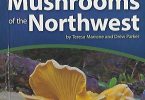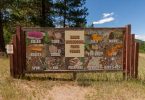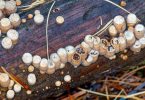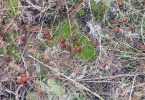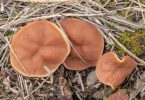Artist’s Conk (Ganoderma applanatum) is a perennial mushroom that has a underside surface suitable as an artist’s canvas (see featured image). Yes it is true, let me explain.
Context
Let me give you context first. A ‘mushroom’ is generically defined as a) “the fleshy fruiting body of a fungus” (Evenson & Denver Botanic Gardens 2015) and b) “not an organism, but a part of an organism” (Arora 1986). There are about twelve different forms of mushroom from an estimate of 2.2-3.8 million species of fungus [includes those that don’t have a fleshy fruiting body] (Bradbury Science Museum newsletter – January 2018) . A gilled mushroom is the form you are most familiar with, yes the kind you buy at the store . The photo below compares the commercial Button Mushroom (Agaricus bisporus) with a wild, gilled specimen, Giant Clitocybe (Clitocybe gigantea). Gills are very obvious in both images; true for all mushrooms considered gilled.
The Artist’s Conk is not gilled (see 2nd photo down) and classified as a polypore. The prefix ‘poly’ in ancient Greek translates to many; so a mushroom considered a polypore must have many pores.
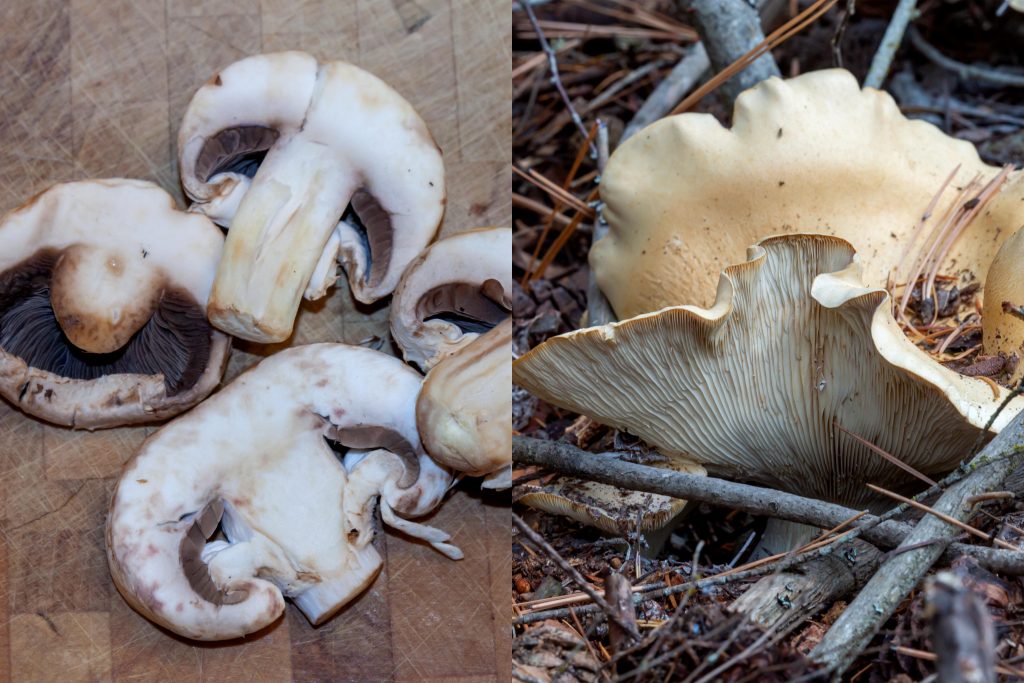
What is a polypore?
If you looked at the photo of the Artist’s Conk directly below, you noticed there are no gills. Artist’s Conk is a polypore that has a rounded, shelf-like appearance that’s attached to hardwood or softwood tree trunks at a right angle. This form of mushroom doesn’t have gills on the underside to produce spores, but pores/tubes instead. The white surface of the underside has 4-6 pores/millimeter (Davis, Sommer and Menge 2012). It is not soft or spongy as it looks in the photo. It is firm in texture akin to a taut artist’s canvas.
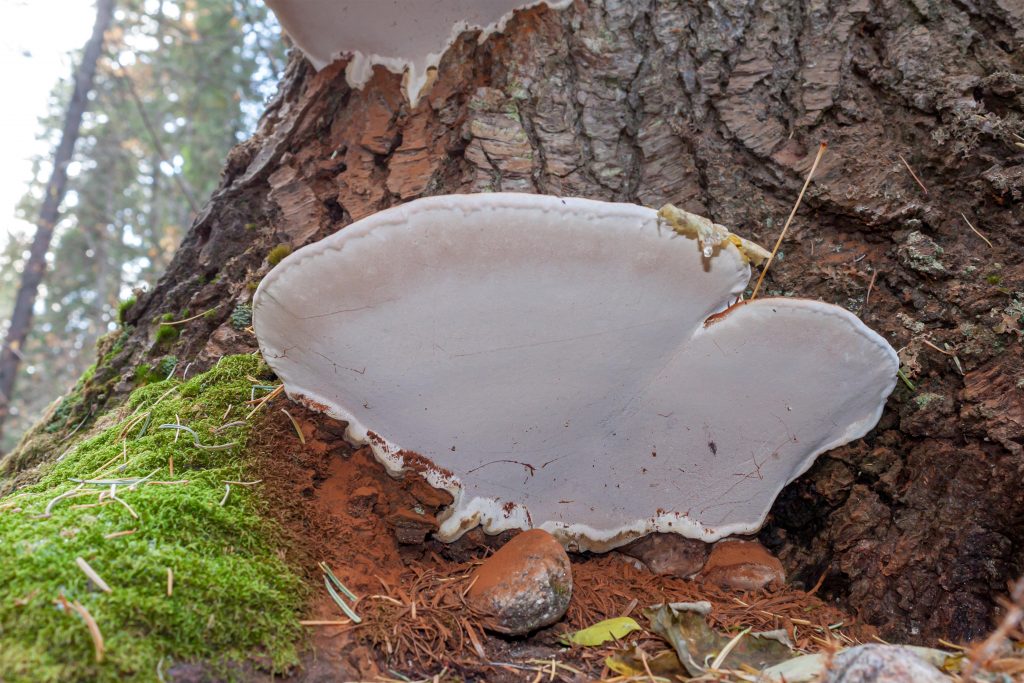
When and where to look
It is a perennial unlike most other forms of mushroom. So, you could even look for it even in winter! It is found over most all of North America Over time it can get as large as 20 inches in width and becomes woody like the trees it is attached to. Site of attachment is usually near the ground. Photo below is a search image for you to use.

Identification
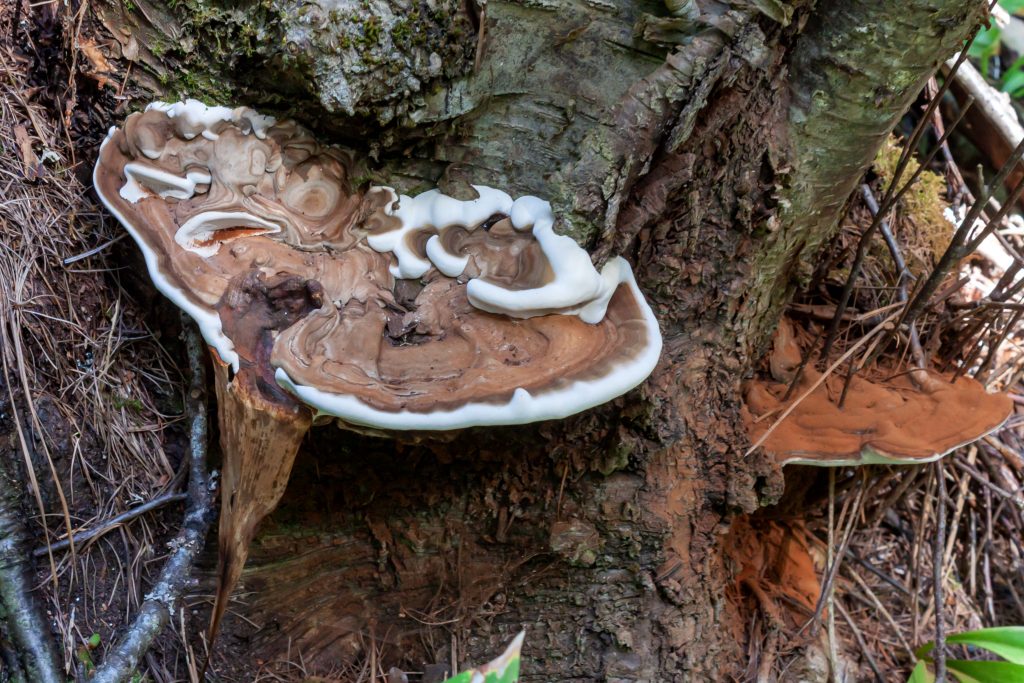
The surface of this mushroom is a dull brown, not shiny or varnished looking like other polypores. You will note the concentric growth rings that are not that differently colored. Also don’t be fooled by spores covering the mushroom surface as pictured above (fruit body on lower right side of tree trunk). In this case the spores are reddish-orange. Arora (1986) related that a large mushroom might release 30 billion spores/day over a six month period!
Other polypore species may have different colored spores, another field mark to pay attention to. Make sure you check the underside for the white pored surface as coloration and form varies from species to species of polypore. At this point you may get a real surprise.
As Artboard
The underside of this mushroom bruises brown, almost instantly from what I have read. People have taken advantage of this fact by signing their name, initials, memes, drawings on individual mushrooms. The Mushroom Forager recommends using a dull pencil for artwork. It is somewhat like carving your initials into a tree trunk. Whatever you do might be visible for several years if you do not harvest the mushroom for a home craft project. I have not found Artist’s Conk decorated as such in the wild. But, I have taken the liberty of compiling online photos of mushrooms taken home and used as canvas to my Pinterest board, Fungi.
The detailed drawings on this organic canvas, as pictured, are pretty spectacular. It is hard to imagine creating such artwork while laying on the ground looking up 🙂 But it is now another reason for you to get outside into nature. Much like a bottle-with-a-message washing up on a beach, will you find a memo from the past? Or will you create your own note to the future. Happy exploring and discovery.


